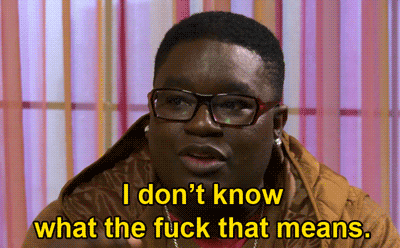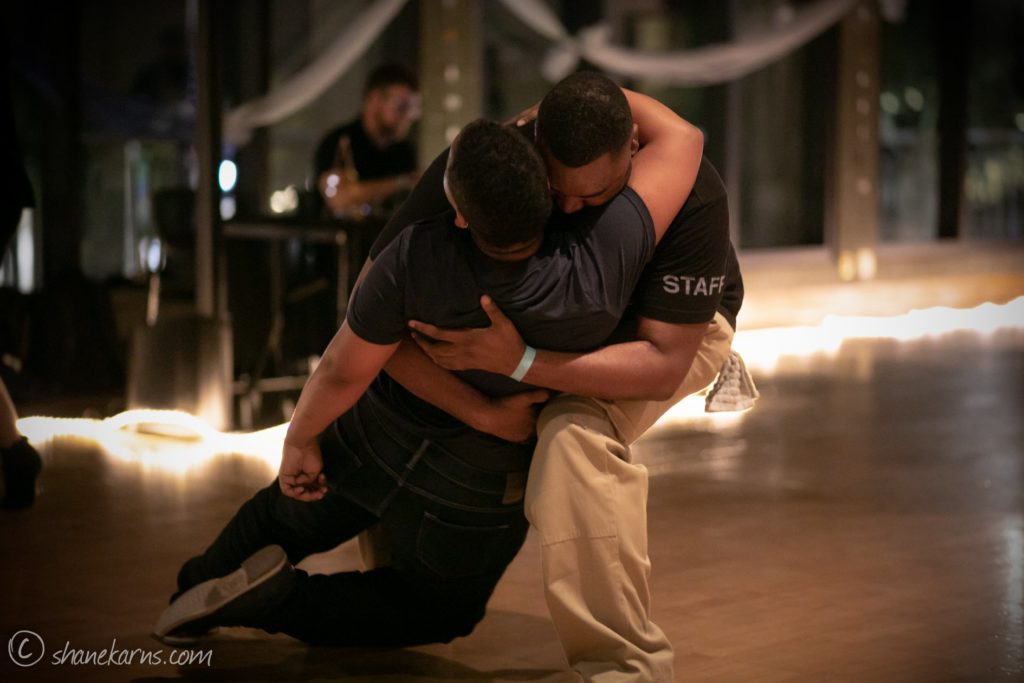
Well, today we’re going to break down what exactly that means and how it fits into blues dancing, how the term has come about, and what the future looks like. Right now, there are a lot of debates in the community about whether idiom dances have hurt our attendance rates, and if so, what to do about that. In this piece, I will reference two communities of dance which are vernacular: the breakin’ community, which is predominantly African-American, and the Latin dance community. Both communities are made up of several different dance styles and I will compare how they function together and separately. This will give us a similar lens to look through as we move forward in the blues dance community.
For starters I have strong feelings about word choice. The language we use make some ideas in the blues dance community much scarier than they need to be. One of those words is “idiom,” so let’s just take a second to break it down. In the dictionary, “idiom” has a lot of different definitions. The definition I think makes the most sense is “a distinct style or character, in music, art, etc”. It’s that simple. In this context, an “idiom blues dance” means “a blues dance style.” That just means that it is specific, it has foundational rules, and it should be recognizable (for example, popping and locking is recognizably different from b-boying). To give another example, it should be as recognizably different as salsa is from merengue. They are in the same family of dances, but it simply means that there are different approaches to these dances, as they have a particular style associated with them. For the remainder of this article, we are going to replace the word “idiom” with a more accessible word: “style.”
Let’s take a second to define another term: “blues dancing.” Naysayers will often note that the people who used to do these dances never called it “blues dancing.” And there is an understandable reason for that. Black people in general aren’t particularly fussed about categorizing and naming things. To the people who did our dances, it was all just slow dancing, no matter if it was slow or not.
It was not taught in large classes; instead, you learned from your elders and your peers. Teaching in that manner is entirely different. As white American culture and Black American culture intersect, there is always an issue of naming things. White culture tends to create and use words to define things that Black people may not have used. I am using the distinction of breaking versus hip-hop dance is because of the same reason. The dancers who created the style associated with the original Breakdancing call themselves Breakers, and yet, as their style became more popular, they had the name “break dancers” placed upon them. The same thing happened with blues dancing. It’s fascinating to read about how the term came to be, what it meant, and everything it did or did not exclude depending on who was writing the term. It is a term that means more than just the 12 bar blues structure and everything that came after it. This has bled into the naming of the style of dance we do. I’ve heard all kinds of histories and stories about how this name came to be, but almost every story has one thing in common- that it was made by people outside of the culture to define a thing that wasn’t the same thing as what people associate dancing to blues music looks like. And a discrepancy, and war was born.
So now we’re going to take a look at blues dancing styles. And what that means and how it fits in the community. But first,we’re going to look back at an experience I had about a year ago going to the Latin dance community. For starters, it was incredibly different from our community in many ways but one way that truly stood out to me was the amount of dances you needed to know to be in the community and how to get around the dancers you don’t enjoy/ don’t know. My friend and I took a Bachata class, why? Because it’s the easiest but also is hard enough for people to understand that there is a lot to learn. We got through the Bachata class and the first thing I noted was that I was unsure what music was supposed to go with that dance. When I look out on the dance floor majority of people were doing a different dance than what I had learned and then the song will change until the dancing. As people started asking me to dance I can feel the slight disappointment that I didn’t know all the dance styles and yet we still had a good time. I think.
Eventually I found a gent around my age who seemed capable at all of the dances and I asked him what the differences were.
He easily explained and lead me through several different styles and I started to understand just how much there was to this. It was amazing and exciting and I wanted to learn so much more. Then a song came on all the youngest people came on the floor, all the elders left, and it sounded closer to club music then I had gotten used to so far. It was reggaeton. My partner made a face and escorted me off the floor. I asked him what was wrong and he told me that although he could do reggaeton it was not his favorite, and that he didn’t particularly like the style in general. His favorite was bachata and yet he could do all of the other styles as well. I was surprised and then looked onto the floor, I understood, reggaeton is the young people dance. That’s sexy, it’s close, it doesn’t require too much technical body control, although it could, and generally had a different feel then the other dance styles. At the same time now it was clearly connected through its music and through its movement to the more traditional styles. Additionally the people dancing it clearly did not lose their cultural understanding, nor their ability to dance the other styles of dance just because they enjoyed reggaeton.
Another way of looking at this is taking a look at the breaking community. When I was teaching the b-boys club of my college how to Lindy Hop they also spent some time attempting to teach me the styles of dancing like they did. Majority of the boys could do different styles of “breakdancing” but particularly like to specialize in one. Because of this it was easy for them to teach me the basics in most styles and send me to the specialist in that particular style if that’s what I was interested in working on that day. It was easy to see how all of them were related and yet very different how they all had a place within the community.
I think when people think about blues dance styles they overthink it. They assume as the styles are introduced that one must be as effective and all of them. That you have to do them all. And somehow that this is too much material for people. or, that specialty should be broken down into separate events like a Swing Community treats their styles of dance. Personally, I wouldn’t look at the Swing Community as a way of doing things in this case, where each dance ( lindy, ECS, Bal, Shag often have separate events or rooms) I would instead look at other minority on communities and see what they do like I discussed above. Some of the other reasons I’ve heard that people do not like the blues dance Styles is because they feel like it is hard to mix all of them and to one event, and they don’t understand this value because the dances were done regionally so why mix some now. if you look at the breaking community or at the Latin dance community if they are able to do and make it pretty seamless it doesn’t make sense why we shouldn’t be able to do it if that’s something we would like to do.

Pingback: Blues Idiom Dances - Laura Chieko